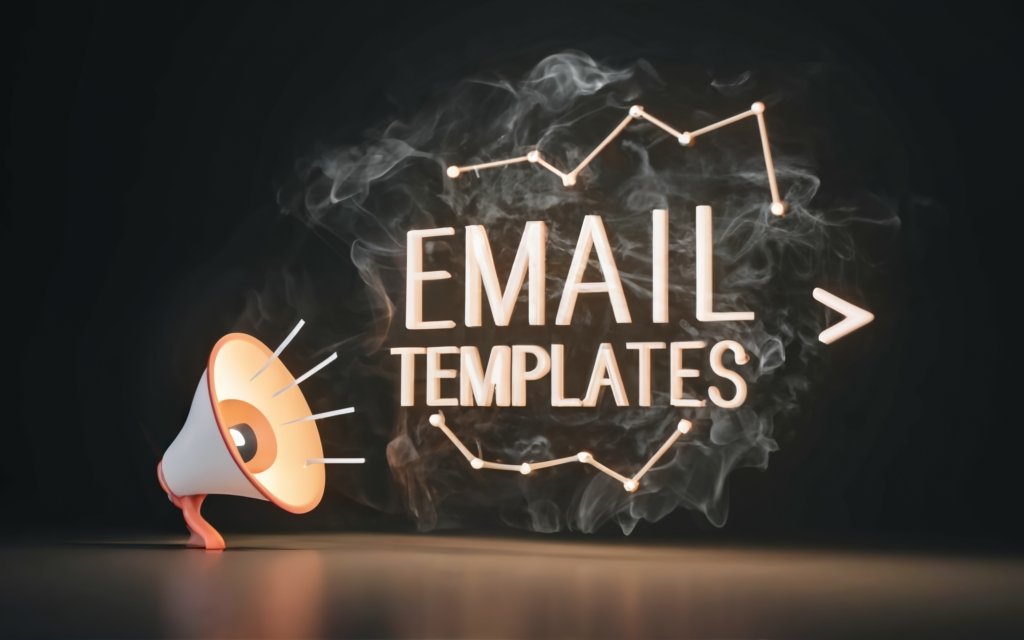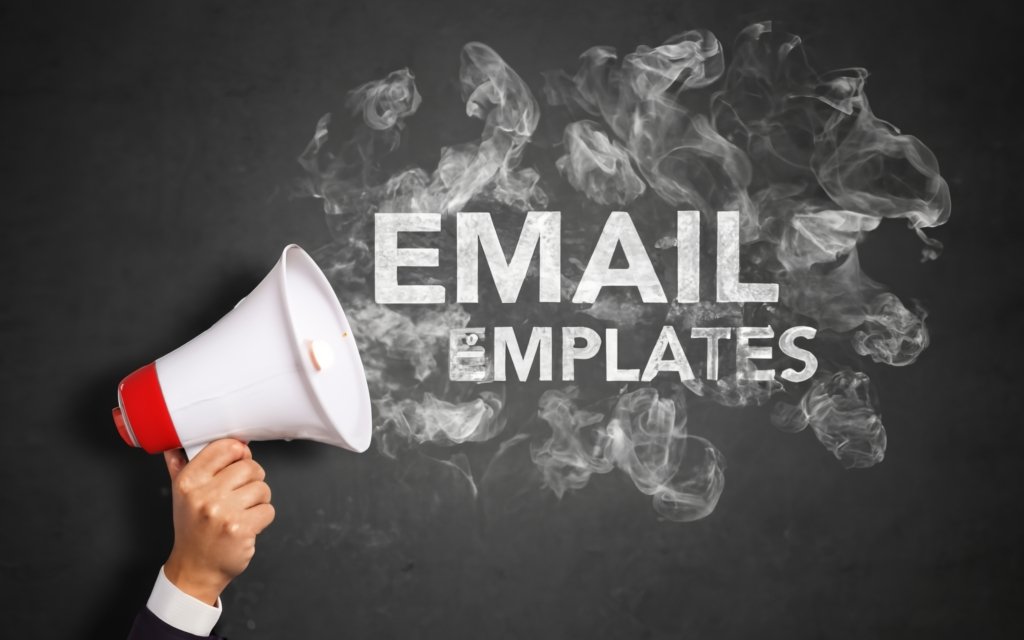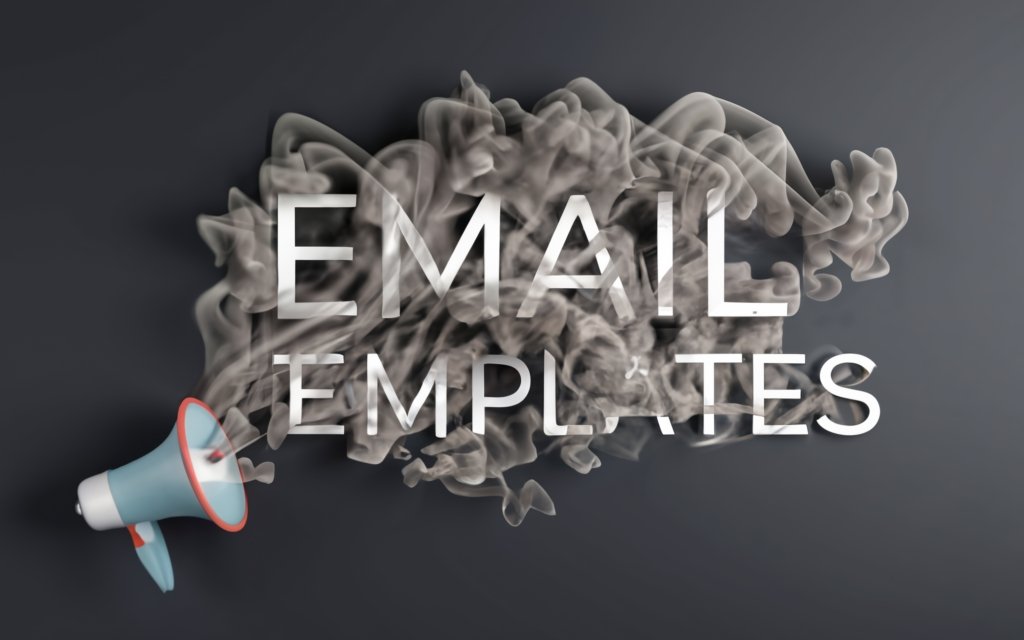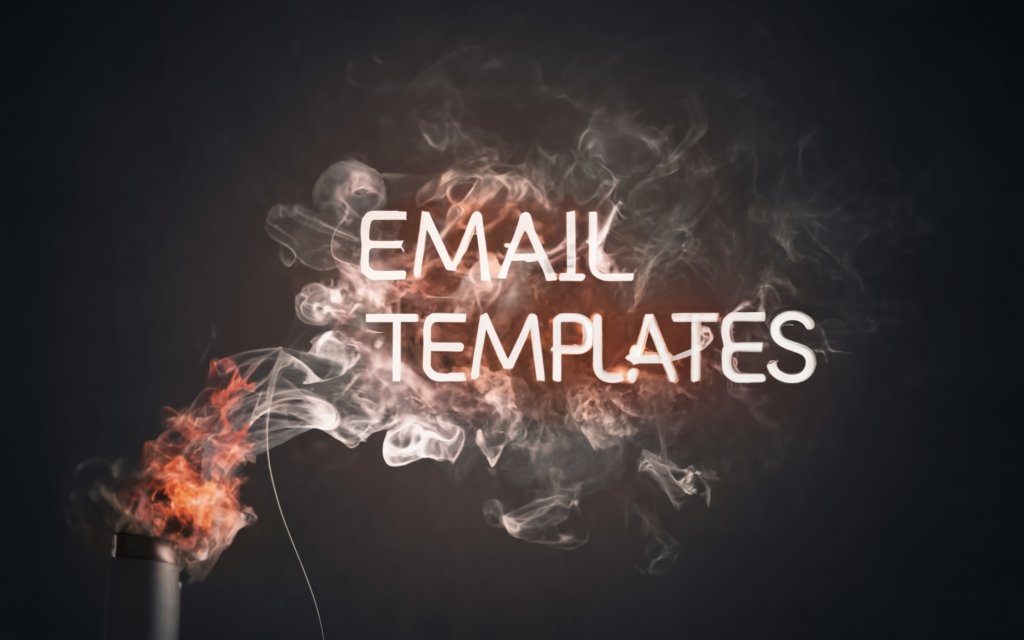Sending the same old emails every day? 🥱 Save time and effort with Gmail templates! This comprehensive guide teaches you how to create, use, and share email templates for maximum productivity.
Whether you’re a Gmail novice or a power user, you’ll master email templating with pro tips to collaborate across teams, integrate branding, automate workflows, and boost engagement through personalization. Let’s dive in!
Introduction
Email is one of the main channels of communication in both our personal and professional lives. Studies show that over 300 billion emails are sent per day globally.
With that volume of email activity, it’s no surprise that many of us end up sending the same or similar messages again and again.
That’s where email templates come in handy!
Email templates allow you to create standardized versions of emails that you can reuse. This saves you time and effort compared to typing out the same email from scratch each time.
In this comprehensive guide, we’ll explore everything you need to know about getting the most out of email templates in Gmail, the world’s most popular email service.
What Are Email Templates?
An email template is a pre-written email message that contains merge fields, allowing parts of the message to be automatically personalized for each recipient.
Some key benefits of using templates include:
- Saves time – No need to write similar emails from scratch every time. Just fill in a few details and send.
- Ensures consistency – Templates keep your messaging on-brand across all outbound communications.
- Enables personalization – Merge tags let you customize templates for each recipient with their name, company, interests etc.
- Boosts productivity – Send more emails in less time. Studies show salespeople using templates send 200% more emails.
- Facilitates collaboration – Teams can share templates to coordinate messaging.
Why Use Templates in Gmail?
Gmail has basic built-in support for email templates to help users save time and effort. Here are some of the key reasons to use templates in Gmail:
- Gmail is used by 1.5 billion people – Leverage the email service most people already use daily. No additional tools needed.
- Available anywhere – Access your email templates from any device through the Gmail web interface or mobile apps.
- Easy to set up – It only takes a few minutes to enable templates and start creating them in Gmail.
- Seamlessly insert templates – Easily insert pre-composed template content into any new message with just a couple of clicks.
- Supports bulk emails – Send mass customized messages to lists using templates. Great for newsletters, outreach campaigns, event invites etc.
- Helps manage responses – Template-based auto-replies can be used to handle common questions that arrive in your inbox.
What We’ll Cover in This Guide
This comprehensive guide will teach you how to fully utilize email templates in Gmail, starting with the basics and progressively advancing to more powerful techniques.
Here’s an overview of what we’ll be covering:
- Enabling templates in Gmail settings
- Creating new email templates from scratch
- Saving existing emails as templates
- Inserting and personalizing templates
- Collaborating on shared team templates
- Automating workflows using templates
- Best practices for template naming, testing, and usage
By the end of this guide, you’ll be a templates pro, armed with the knowledge to create effective templates for various scenarios, send customized bulk communications, collaborate with your team, and take advantage of automations to save time.
Let’s jump right in and get you templating like a boss!

Enabling Email Templates in Gmail
To start creating and using email templates, the first step is to enable Gmail’s built-in templates feature. Here’s a step-by-step walkthrough:
How to Turn On Templates in Gmail Settings
Enabling templates is quick and easy – it should only take you a minute or two.
Here are the steps:
- Open Gmail on your computer and log into your account. Templates can only be created and inserted through the web browser interface, not in the mobile apps.
- Click the Settings icon, represented by a gear symbol at the top right corner of the page.
- From the drop-down menu that appears, select See all settings. This will open the full Settings dashboard.
- Look for the Advanced tab at the top and click on it.
- Scroll down until you see the Templates section.
- Under Templates, click the radio button next to Enable.
- Finally, scroll all the way down and click the blue Save Changes button.
That’s it! Templates have now been enabled for your Gmail account.
Gmail will refresh the page momentarily, and you’ll now have access to all the template options when composing new messages.
!Gmail settings window showing how to enable templates
Enabling templates allows you to save draft emails as templates, insert templates to use them, and manage your template library.
Without this setting enabled, Gmail provides no options for templates while composing new messages.
What Enabling Templates Actually Does
Under the hood, enabling templates gives users access to Gmail’s Canned Responses feature.
Canned Responses have been around for many years as a way to save and reuse frequently sent messages. However, Google now refers to them as templates in the Gmail interface.
When you enable templates, here are some of the key capabilities you gain:
- Template library – Manage all your templates in one place.
- Save drafts – Save any draft as a new template from the compose window.
- Insert templates – Insert any template when composing a new email.
- Personalize – Fill in merge tags like name, company etc. to customize.
- Collaborate – Share templates with team members (requires Google Workspace).
- Autofill sidebars – Suggest relevant templates as you compose emails.
- Trigger auto-responses – Set templates to respond automatically based on filters.
So in summary, enabling templates unlocks a range of powerful capabilities that will allow you to streamline your workflow and communicate more efficiently.
Limitations of Gmail Templates
While Gmail templates provide a basic template experience, there are some limitations to be aware of:
- Limited personalization – Only basic To, From, Subject merge fields available.
- No tracking analytics – Can’t see open/click rates on templates.
- No variables or conditional logic – Lacks dynamic templates capabilities.
- No revision history – Changes overwrite previous versions.
- Max 50 templates – Gmail caps your library at 50 templates.
- Can’t schedule emails – No way to set a template to send at a certain time/date.
- No A/B testing – Can’t A/B test subject lines or content within Gmail.
- No automation workflows – No way to trigger a sequence or series of templates.
While Gmail templates provide an easy starting point, third-party add-ons can unlock more advanced functionality like analytics, scheduling, workflows, and collaboration tools. We’ll explore some of these later in this guide.
But to get started with basic templates, simply turn on the feature in your settings, and you’re ready to start composing templates!
Creating Email Templates in Gmail
Now that you’ve enabled templates, it’s time to start creating your own templates to streamline your email workflow.
There are a few different approaches to compose new templates from scratch, save existing emails as templates, and set up templates for specific uses cases.
Composing a New Email Template
The most straightforward way to create a Gmail template is to compose a new email message and save it as a template.
Here are the steps to create a brand new template:
Drafting the Content
- Click Compose to start a new email.
- Draft your template message, including any text, formatting, images, attachments etc.
- Use merge tags like {Name}, {Company} anywhere you want the template personalized.
- Make sure to leave the To field blank – this will allow you to add recipients later when using the template.
Saving as a Template
- Once you’re satisfied with the template content, click the More Options menu (3 dots icon) at the bottom right.
- Select Templates > Save draft as template.
- Choose Save as new template to create a new one or select an existing template to overwrite.
- Give your template a name and click Save.
Naming Conventions
- Keep template names short, simple, and descriptive e.g. “Newsletter”, “Holiday Promotion”.
- Avoid using date, version numbers, or other time-bound references in names.
- Capitalize each word (NewsletterTemplate vs newslettertemplate). This helps when quickly scanning your template library.
And that’s it! Your template is now saved and ready to be inserted into any future emails.
Creating Templates from Previous Emails
You can also save existing emails as templates if you have a message you want to reuse. Here’s how:
- Open the email message you want to template-ify.
- Click the More menu at the top.
- Choose Save as template.
- Alter the content if needed – you can make changes before saving the final version as a template.
- Finally, click Save as template to store it for future reuse.
This allows you to leverage any well-written emails you’ve already created as templates rather than starting from scratch.
Creating Templates for Different Purposes
Here are some examples of common email template use cases:
- Outreach templates – Tailored value propositions for cold contacts.
- Newsletter templates – Stylized content with brand colors/logos.
- Reminder templates – Meeting or payment reminders.
- Customer service templates – Auto-replies to common questions.
- Email sequences – Drip campaign templates sent via triggers.
- Holiday templates – Seasonal promotions or holiday wishes.
- Webinar templates – Invitation and logistics emails.
- Onboarding templates – Welcome new users or members.
Take inventory of the types of emails you send regularly and create templates optimized for each use case. Segment them using labels so they are easy to find when composing a specific type of email.
The key is to identify repetitive emails and convert them into templates that provide a starting framework you can customize as needed.

Using and Editing Templates
Now that you’ve built up your arsenal of email templates, let’s go over how to make the most of them – inserting templates quickly, personalizing your messages, and updating templates as needed.
Inserting a Template into a New Email
When composing a new message, you can insert a template in just a few clicks:
- In Gmail, open a new compose window.
- Click the More options menu (3 vertical dots icon) at the bottom right.
- Select Templates from the menu.
- Browse your template library and hover over the template you want to use.
- Click Insert to drop the entire template content into the email.
- Alternatively, click Fill in to be walked through filling in any merge tags in the template step-by-step before inserting.
- Make any modifications you need to customize or update the language.
- Finally, address the recipients as required and click Send!
And that’s it – your templated message will be on its way and you barely had to type a thing.
When you need to send emails with similar messaging, templates are a real time-saver. Just insert, personalize, send!
Personalizing Templates with Merge Tags
One of the key benefits of templates is being able to customize them for each recipient.
Gmail has limited merge tag capability, but you can use tags like:
- {FirstName}
- {LastName}
- {FullName}
Example template excerpt using merge tags:
Hi {FirstName},
My name is {FullName} and I'm reaching out because I see you work in {Industry} and wanted to connect about {Topic}.
I hope you're doing well! Let me know if you have a few minutes to discuss.
Thanks,
{FirstName}When you insert this template, Gmail will pop up a dialog allowing you to fill in the relevant details for each contact before inserting the message body.
This enables you to maintain a conversational tone with personalized greetings and relevant details.
Updating and Overwriting Existing Templates
As your messaging evolves over time, you may need to update your existing templates. Here’s how simple it is:
- Make a copy of the old template by inserting it into a new draft email.
- Edit the content within the draft, changing anything that needs to be modified.
- Once finalized, click the More options menu.
- Select Templates > Save draft as template.
- Under “Overwrite Template”, choose the old template name and confirm.
This will save your revised draft over the previous version. Any changes will be reflected going forward when inserting that template.
Similarly, you can delete outdated templates that are no longer in use. Just select the template name under Templates > Delete template to remove it from your library entirely.
Staying organized and keeping your templates up-to-date ensures they continue providing value over time as your needs evolve.
Advanced Use of Gmail Templates
Once you’ve mastered the basics, let’s explore some more advanced ways to get even more value from Gmail templates.
Sharing Templates with Your Team
Collaborating on shared templates helps ensure branding consistency and saves time by allowing your team to use pre-approved templates.
Here’s how to share templates across your team in Gmail:
- Create the template and make sure it follows your organization’s messaging guidelines.
- Open the template and click the More menu at the top.
- Select Share as template from the dropdown menu.
- In the sharing window, choose which group or users you want to share with.
- Set any additional sharing preferences like edit access.
- Click Share and your template will be added to the selected group/users.
Now your colleagues will be able to access and insert the template into their own emails, ensuring a unified messaging approach.
Consider setting up template naming conventions like prefixes, labels or tags to organize shared templates. You can also include usage guidelines within the template body to guide team members.
Automating Templates for Workflows
You can use templates along with filters to automate responses to common emails and simplify workflows.
For example:
- Create templates for common questions or requests like billing, tech support etc.
- Set up filters based on sender, keywords, or other criteria.
- Configure the filter to automatically send the matching template as a reply.
Now when those types of emails come in, Gmail will respond instantly with the template saving you time and effort.
You can streamline many processes – meeting invites, event RSVPs, lead nurturing campaigns etc. using filtered template auto-responses.
Building Branded Emails with Gmail Layouts
Gmail Layouts allow you to customize the look and feel of your emails beyond the standard template editor.
With Layouts, you can:
- Upload your brand logo and colors
- Configure stylized headers/footers
- Add custom fonts
- Include merged images and illustrations
To design a branded template layout:
- Start a new email and click the Layouts tab.
- Select a premade layout or configure your own custom theme.
- Drag and drop modules like images, buttons, dividers etc.
- Save as a template to reuse the branded design.
Your templates will look polished and professional with your organization’s visual identity instead of plain text.
Consider also adding variables to inject personalized details into your branded templates like the customer’s name, account info, order details etc.

Best Practices for Gmail Templates
Now that we’ve gone over how to create, use, and share templates, let’s review some top tips to use templates effectively.
Follow these best practices and your template game will reach the next level!
Keep Template Names Simple and Clear
With a limited view of your template library in Gmail, template names need to be scannable and descriptive.
- Keep names concise, ideally 2-3 words.
- Summarize the template purpose – e.g. Newsletter”, “Meeting Follow-Up”.
- Avoid using date, version, or recipient info already in the template body.
- Capitalize the first letter of each word to improve readability.
- Consider using prefixes for categorization – e.g. “OUTREACH – Cold Pitch.
- Use consistent naming schemes across templates types.
With descriptive names, you and your team can quickly find the right template to insert.
Test and Refine Your Templates
Treat your initial templates as a starting point. Use these tips to improve them over time:
- Track performance – Note open and reply rates to identify ineffective templates.
- Review periodically – Revisit old templates to see if content needs updating.
- Get feedback – Ask colleagues for input on how to optimize templates.
- A/B test variations – Try different subject lines or content in each version.
- Check rendered view – Preview how templates look post-send with full merges.
- Fix issues – Delete or overwrite problematic templates.
Continuous refinement means your templates stay effective even as circumstances change.
Use Templates Consistently for Branding
A key benefit of templates is strengthening your brand through consistent messaging.
- Coordinate teams – Share approved templates to maintain unified communications.
- Control language – Limit excessive edits by individuals that may dilute branding.
- Configure account defaults – Setorganization-level templates to auto-populate for all users.
- Enforce compliance – Ensure legal/regulatory-approved language is used.
- Highlight branding – Use visual templates with logos, colors, and fonts on-brand.
- Limit options – Don’t overwhelm users with too many templates to choose from.
With aligned communications across all touchpoints, your customers will engage more deeply with your brand’s messaging.

Conclusion
We’ve reached the end of our comprehensive guide on mastering email templates in Gmail. Let’s recap what we learned:
Key Takeaways
- Enabling templates unlocks built-in Gmail functionality to save drafts as reusable templates.
- New templates can be composed from scratch or by saving existing email content.
- Insert any template while composing a draft email to auto-populate messaging.
- Merge tags allow basic personalization of templates for each recipient.
- Templates can be overwritten or deleted as needed to keep your library updated.
- Shared team templates ensure brand consistency across company communications.
- Filters enable automating common responses using auto-reply templates.
- Layouts provide more advanced branding and customization capabilities.
- Follow best practices like clear naming, testing, and disciplined usage for maximum impact.
Benefits
- Substantial time savings from reduced email drafting needs.
- More professional, consistent external communications.
- Ability to optimize and tailor messaging over time.
- Increased team alignment through structured collaboration.
- Scaled reach to customers with batch communications.
- Reduced human error risk with pre-approved template language.
Maximizing Value
Remember that templates are a starting point meant to be customized for each scenario and recipient. Resist the urge to over-automate and neglect personalization – this can damage engagement.
Set up your templates thoughtfully, track performance rigorously, and refine them continually based on learnings. Use templates to enhance human communication, not replace it.
Integrate templates seamlessly into natural workflows vs introducing cumbersome process changes to force template usage. Balance consistency with creative messaging tailored to unique conversations and relationships.
Future Opportunities
While Gmail templates offer quite a bit of value on their own, third-party apps can fill gaps around analytics, automation, and collaboration – unlocking even more capabilities.
Exploring plugins like Yesware](https://www.yesware.com/gmail-addon/), [Mixmax etc. that integrate with Gmail may be worthwhile as your template needs grow beyond basics.
But you’re now equipped with all the core knowledge to start streamlining your email workflow with Gmail templates. The rest is up to you – go forth and template!
Summary
Here are the key takeaways from this comprehensive guide on mastering email templates in Gmail:
- Enable Gmail templates in settings to unlock built-in functionality for saving and reusing emails.
- Create new templates from scratch or by saving existing email content as a starting point.
- Easily insert templates when composing new emails to auto-populate messaging.
- Use merge tags for basic personalization with each recipient’s name, company etc.
- Manage your template library by overwriting old versions or deleting outdated templates.
- Share templates with your team to collaborate and ensure branding consistency.
- Set up filters to trigger auto-response templates based on inbound email criteria.
- Take advantage of Gmail Layouts for more advanced branding and customization capabilities.
- Follow best practices around naming, testing, maintenance, and disciplined usage of templates.
- Balance consistency from templates with customization and personalization for each conversation and relationship.
- Consider third-party apps like Yesware or Mixmax to take capabilities beyond Gmail’s built-in template features.
- Remember that templates provide a great starting point but focus on contextual relevance and meaningful personalization.
By mastering email templates in Gmail, you can communicate more efficiently, strengthen brand consistency, simplify team coordination, and automate repetitive tasks.
Frequently Asked Questions
Here are answers to some commonly asked questions about creating and using email templates in Gmail:
How many templates can you have in Gmail?
Gmail allows up to 50 email templates per account. If you hit the limit, you’ll need to delete outdated templates to make room for new ones.
Can you create email templates on the Gmail mobile app?
No, Gmail templates can only be created and inserted through the web browser interface. The Gmail mobile apps do not support templates.
How do you access templates on a shared team inbox?
On a Google Workspace Business account, teammates can collaborate on shared templates stored under the Templates tab in the inbox toolbar.
Can you set up automatic emails from templates?
Yes, you can combine Gmail filters with auto-responses to automatically send templated emails based on inbound message criteria.
Are there merge tags for names in Gmail templates?
Yes, basic merge tags like {FirstName}, {LastName}, {FullName} can be used within Gmail templates for personalization.
Can you tell if a template was used to send an email?
Yes, in the sent email details, you can see the specific template that was inserted when composing the message.
How do you organize a large number of templates?
Use consistent naming schemes and take advantage of labels, categories, or prefixes to group related templates together for easy access.
What happens if you overwrite an existing template?
When you overwrite a template, any changes made in the new version will be reflected going forward. The previous iteration is discarded.
Can you revert an overwritten template back to a previous version?
No, once a template is overwritten in Gmail there is no version history. You would need to recreate the old version from scratch as a new template.
Let me know if you need any other common template questions added!

